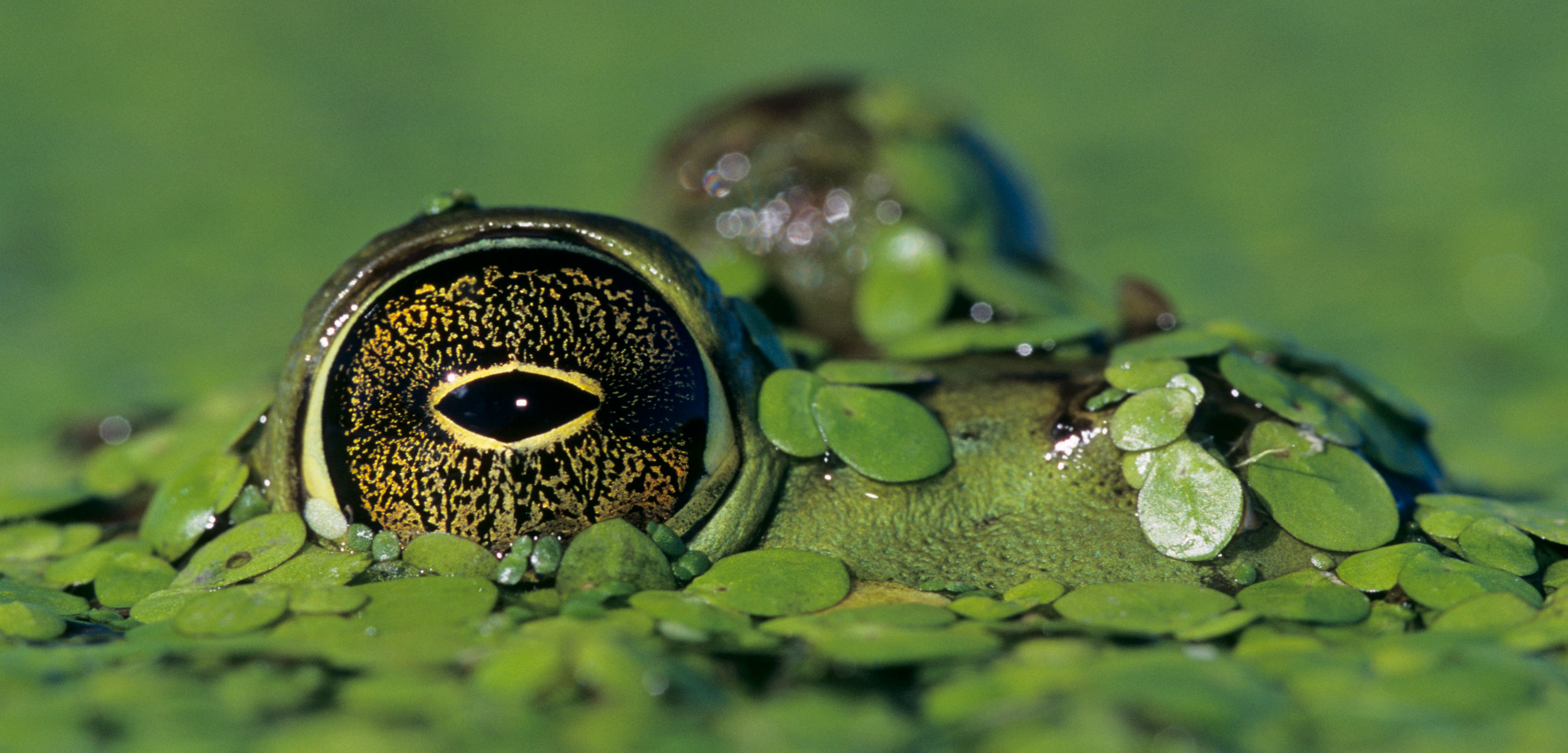Paralytic Shellfish Poisoning Meets Its Match
As climate change brings more red tides, a protein from the American bullfrog might provide protection from paralytic shellfish poisoning.
Article body copy
Every summer, warm waters bathe the west coast of the United States, Canada, and other parts of the world in toxic algae. Particularly frightening are dinoflagellates in the genus Gonyaulax, Alexandrium, Gymnodinium, and Pyrodinium, which secrete saxitoxin, one of the world’s most lethal neurotoxins. Shellfish swallow saxitoxin and concentrate it in their bodies so readily that eating just one saxitoxin-laden mussel can cause paralysis and even death. Despite government warnings, people are poisoned every year by mussels they’ve gathered and eaten—as are birds, whales, and seals. But algae eaters—including shellfish, pufferfish, and freshwater frogs—remain blissfully unaffected.
Since the 1990s, scientists have known that these animals are naturally resistant to saxitoxin: they make proteins that sequester saxitoxin so it can’t affect their nervous systems. Recently, a team led by Daniel Minor, a biophysicist at the University of California, San Francisco, has taken on a molecular investigation of the novel phenomenon.
Minor and his colleagues used X-ray crystallography—the same technique used to first identify the structure of DNA—to create an atomic-resolution picture of saxiphilin, an antitoxin protein collected from American bullfrogs. They could see, in intricate detail, how saxiphilin binds with saxitoxin to render it harmless. This sophisticated image could bring researchers one step closer to detecting saxitoxin and dozens of other similar marine toxins, and even developing an antitoxin.
Detection may prove ever more essential in coming years. As climate change begets rising ocean temperatures and the deoxygenation of coastal waters, algal blooms worldwide are becoming bigger and lasting longer. More algal blooms mean more toxin-laden seafood and more sick humans, birds, and seals. If the trend continues, a better toxin detector will be a vital part of public health efforts.
“This is a case where we perhaps have an opportunity to do something that has a real public health impact,” says Minor.
Minor’s curiosity about marine toxins was sparked in 2011 by a surprise email. At the time, he had been researching sodium channels, the passages by which cells communicate, in bacteria. Sodium channels are also the site at which saxitoxin and other neurotoxins attack human nerve cells. One day, James Hungerford, a toxin research chemist at the US Food and Drug Administration, cold-emailed Minor with a question: could he use bacteria to make saxitoxin detectors for state agencies like the California Department of Public Health?
To protect the public, the department routinely tests for saxitoxin and other marine toxins at hundreds of spots along the coast every week. But the saxitoxin test used at the time—and still in use today—was developed in the 1930s and involves dosing mice with toxic seawater and seeing how long it takes them to die. Some people think the test is inhumane, considering how many mice must die to confirm the quality of the water. But the test remains the quickest and cheapest approach available.
Hungerford wondered if Minor could develop a bacteria-based detector instead*. If the bacteria would stick to the saxitoxin, he thought, testers could quickly visualize if there were dangerously high concentrations of the toxin in the water.
Sadly, Minor knew from previous research that the approach wouldn’t work. But the seed was planted. “It got me thinking about the problem—it was kicking around in my head for a long time,” Minor says.
In his new study, Minor focused on identifying the physical structure of saxiphilin and found that it is shaped somewhat like a butterfly. Saxitoxin binds at an indented spot on one of the wings. The pocket fits saxitoxin snugly and is negatively charged, attracting the toxin electrostatically. To Minor’s surprise, the binding site looks almost exactly the same as when saxitoxin binds to sodium channels in human nerve cells, which means that saxiphilin might work to mitigate the effects of saxitoxin in people, too.
Coincidentally, Lauren O’Connell, an ecologist at Stanford University in California**, also became interested in saxiphilin last year when she discovered that it is abundant in the blood of poison dart frogs, and may be involved in their own toxin resistance. Neither Minor nor O’Connell knew of the other’s work, but they both think saxiphilin is an exciting, up-and-coming topic of research.
“Dr. Minor’s work represents a resurgence in the importance of saxiphilin and has opened up a new field of study on toxin binding and sequestration,” says O’Connell.
It will take more research and development to make a functioning saxitoxin detector, but knowing the structure of the binding pair helps. In the future, scientists may use saxiphilin or a similar synthetic molecule to produce an antitoxin that could bind just enough saxitoxin so that the liver can flush it out before it accumulates and makes someone sick. But until funding materializes for such an imaginative solution, detection is still the front line of the effort.
*Correction: This section of the story has been updated to clarify the relationship between Hungerford and Minor.
**Correction: Lauren O’Connell is at Stanford University in California, not Princeton University in New Jersey

